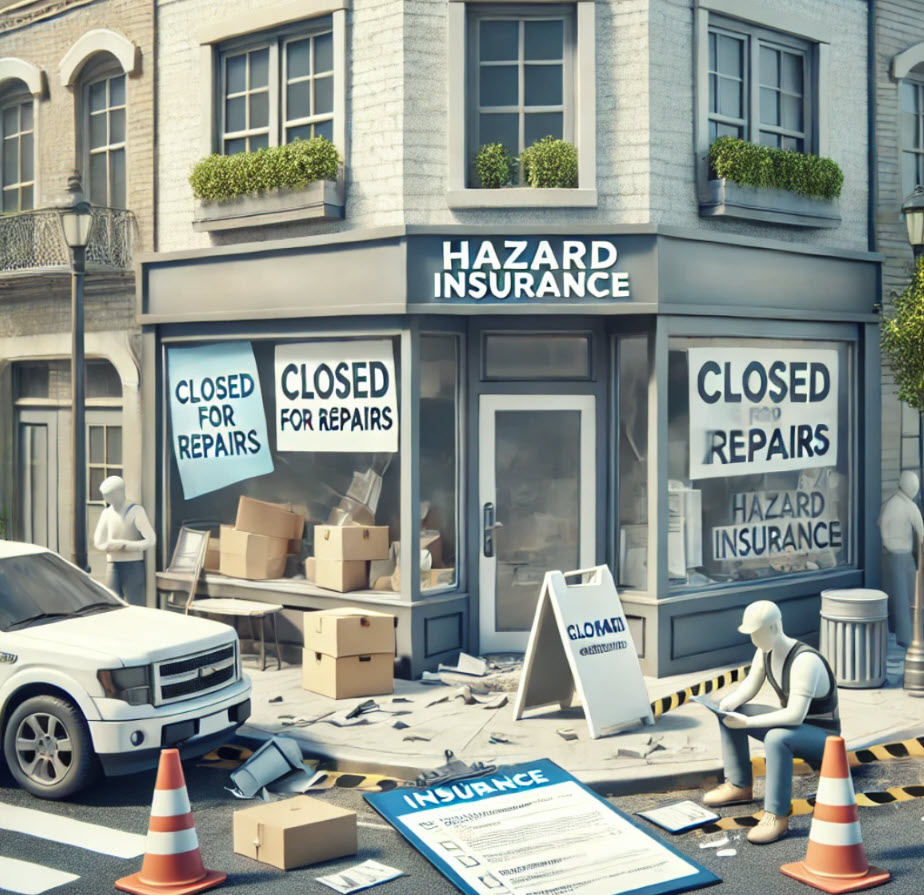Hazard insurance is a critical safeguard for small businesses, protecting them against unexpected events that can disrupt operations or cause financial ruin. From natural disasters to accidental damage, having the right insurance can mean the difference between recovery and closure. However, navigating the complexities of hazard insurance can be a daunting task for business owners.
Unfortunately, many small business owners overlook the hidden risks and limitations in their hazard insurance policies. These gaps can leave them vulnerable at the worst possible moments, with inadequate coverage or costly surprises during claims. Understanding these risks is vital to ensuring comprehensive protection.
This article delves into the most common pitfalls of hazard insurance and provides actionable strategies to address them. By taking a proactive approach, small business owners can secure better policies, avoid financial setbacks, and safeguard their livelihood.
1. Gaps in Coverage
Gaps in hazard insurance coverage can leave small businesses vulnerable to unexpected disasters. For instance, many policies exclude coverage for events like earthquakes, floods, or other natural calamities, despite their potential to cause significant damage. These exclusions often go unnoticed until it’s too late, leaving business owners to shoulder the financial burden.
Another common issue is the lack of coverage for specialized equipment or temporary operations, which may be integral to certain industries. These gaps can lead to a false sense of security, as business owners believe they’re fully insured only to discover limitations when filing a claim.
Small businesses must also contend with vague policy language that obscures what is and isn’t covered. This ambiguity can create disputes during the claims process, further delaying recovery and increasing costs for the business.
How to Protect Yourself from Gaps in Coverage
- Review policy exclusions carefully to understand what risks are not covered.
- Consider additional policies, such as flood or earthquake insurance, to address specific gaps.
- Consult an insurance advisor to identify potential coverage deficiencies and recommend suitable options.
2. Underinsured Property
Underinsuring property is a common mistake that can have severe financial consequences. Many small businesses underestimate the value of their assets or fail to update policies to reflect appreciation or increased inventory. This oversight often results in inadequate payouts during claims.
For example, if your business premises or equipment are undervalued, you may only receive a fraction of the replacement cost in the event of damage. This can hinder your ability to recover fully and resume operations.
In some cases, businesses fail to account for inflation or market changes, further reducing the effectiveness of their coverage. Ensuring your policy reflects the true value of your assets is crucial for comprehensive protection.
How to Protect Yourself from Underinsured Property
- Regularly assess the value of your property, equipment, and inventory to ensure accurate coverage.
- Update your policy periodically to reflect current replacement costs and market conditions.
- Use professional appraisals to establish the true value of your assets and avoid underinsurance.
3. Delayed Claims Payouts
Delayed claims payouts can create significant financial strain for small businesses. Slow processing times or excessive documentation requirements often leave businesses in limbo, unable to repair damages or replace lost assets promptly.
These delays can be especially detrimental during peak operational periods when downtime directly impacts revenue. Businesses may also face additional costs, such as temporary closures or alternative arrangements, while waiting for their claim to be resolved.
Unfortunately, some insurers intentionally prolong the process to minimize payouts or discourage claimants. Understanding the claims process and working with reputable insurers can mitigate these challenges.
How to Protect Yourself from Delayed Claims Payouts
- Choose insurers with a proven track record of fast and fair claims handling.
- Maintain thorough documentation of assets, damages, and repair costs to streamline the claims process.
- Follow up persistently with your insurer to ensure timely resolution and avoid unnecessary delays.
4. Rising Premiums Post-Claim
Filing a claim often leads to increased insurance premiums, even if the claim was unavoidable or minor. This can place an additional financial burden on small businesses, making it harder to afford necessary coverage in the future.
Rising premiums are particularly frustrating for businesses that already operate on tight margins. In some cases, insurers may categorize businesses as high-risk after a single claim, compounding the cost of maintaining insurance.
Understanding how claims impact your premiums and negotiating with providers can help limit these increases and maintain affordable coverage.
How to Protect Yourself from Rising Premiums Post-Claim
- Compare policies and providers to find those with stable rate structures and lower post-claim hikes.
- Understand the potential premium impact of filing a claim before proceeding.
- Negotiate with your insurer to cap premium increases or explore alternative coverage options if costs become prohibitive.
5. Overlapping or Unnecessary Coverage
Many small businesses unknowingly pay for overlapping or redundant insurance policies. For example, hazard insurance might duplicate coverage already included in a general liability policy, resulting in wasted resources.
These overlaps are often a result of poor communication or insufficient policy reviews. Small businesses may also be sold unnecessary add-ons by providers looking to increase profits.
Streamlining coverage and eliminating redundancies can help reduce costs while ensuring comprehensive protection.
How to Protect Yourself from Overlapping or Unnecessary Coverage
- Conduct a detailed policy audit to identify and eliminate redundancies in coverage.
- Streamline your insurance by consolidating with a single provider offering comprehensive policies.
- Seek guidance from an insurance advisor to tailor policies that complement each other without overlap.
Conclusion
Understanding the intricacies of hazard insurance is essential for small business owners aiming to protect their livelihood. From identifying gaps in coverage to navigating complex claims processes, being proactive can help avoid common pitfalls. Neglecting these details can lead to financial strain, inadequate protection, or wasted resources.
By thoroughly evaluating policies and taking steps to secure comprehensive, tailored coverage, small business owners can mitigate risks effectively. Whether it’s reviewing exclusions, ensuring adequate property valuation, or streamlining policies, these actions contribute to greater peace of mind.
Investing time and effort into choosing the right hazard insurance not only protects your business but also strengthens its resilience against unforeseen challenges. With the right strategies, you can safeguard your future and focus on growing your enterprise.
Learn more about other types of business-related insurance for your business.

